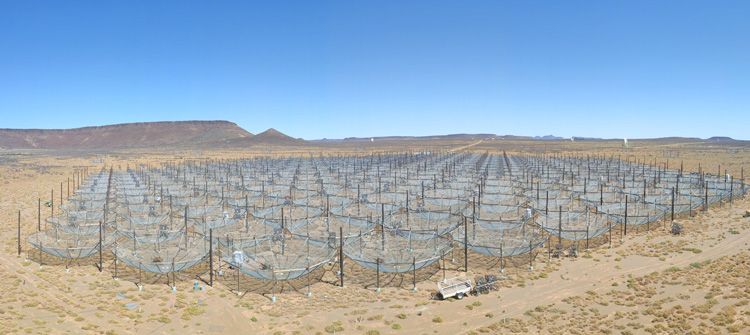量子情報のスクランブルの仕方を利用した新しいエラー検出法 New error-detection method takes advantage of the way quantum information is scrambled
2023-01-24 カリフォルニア工科大学(Caltech)

Researchers have discovered that complex random behaviors naturally emerge from even the simplest, chaotic dynamics in a quantum simulator. This illustration zooms into one such complex set of states within an apparently smooth quantum system.Credit: Adam Shaw/Caltech
◆このような量子デバイスは、自然界で起こっていることを模倣しており、科学者は医療やコンピューターエレクトロニクスなどの分野で有用となりうる新しいエキゾチックな材料を開発することができる。本格的な量子コンピュータが完成するのはまだ先のことだが、研究者たちはすでに、高温超伝導体やその他の量子物質を効率的にシミュレーションするなど、特定の問題を解決するために作られた量子シミュレータと呼ばれる量子デバイスの実験を行なっている。また、自律走行車が衝突しないように経路を計画するといった、複雑な最適化問題を解くことも可能だ。
◆このような量子マシンを使用する際の課題として、古典的なコンピューターに比べて非常にエラーが起こりやすいということがある。また、このような新しいシステムでは、エラーを特定することが非常に困難です。「と、キャルテックの大学院生で、量子コンピュータの精度を検証する新しい方法についての研究(Nature誌)の主執筆者2名のうちの1人であるアダム・ショウは言っています。”機械を開けて中を見ることはできませんし、膨大な量の情報が保存されているので、古典的コンピューターが説明し検証するには多すぎます。”
◆Nature誌の研究の中で、ショーと、カリフォルニア工科大学の元博士研究員で、現在スタンフォード大学の教授である共同著者ジュンヒー・チョイは、量子デバイスの精度、別名フィデリティを測定するための新しい方法を実証しています。二人の研究者は、キャルテックの物理学教授でローゼンバーグ奨学生であるマニュエル・エンドレスの研究室で働いている。彼らの新しい戦略の鍵は「ランダム性」である。研究者たちは、量子系における情報のスクランブルの仕方に関連する、新しいタイプのランダムネスを発見し、その特性を明らかにした。しかし、量子の振る舞いがランダムであっても、普遍的な統計的パターンをノイズの中に見出すことができる。
◆研究者達は、25もの量子ビットを持つ量子シミュレーターで、そのプロトコルを実証しました。エラーが発生したかどうかを確認するために、研究者らはシステムの挙動を単一量子ビットレベルまで何千回も測定した。量子ビットが時間とともにどのように変化していくかを見ることで、一見ランダムに見える動作のパターンを特定し、予想とのずれを探すことができたのである。最終的には、エラーを発見することで、研究者はそれをいつ、どのように修正すればよいかがわかるようになる。
<関連情報>
- https://www.caltech.edu/about/news/randomness-in-quantum-machines-helps-verify-their-accuracy
- https://pubmed.ncbi.nlm.nih.gov/36653567/
ランダムな状態の準備と多体系量子カオスによるベンチマーク Preparing random states and benchmarking with many-body quantum chaos
Joonhee Choi, Adam L Shaw, Ivaylo S Madjarov , Xin Xie, Ran Finkelstein, Jacob P Covey, Jordan S Cotler, Daniel K Mark, Hsin-Yuan Huang, Anant Kale, Hannes Pichler, Fernando G S L Brandão, Soonwon Choi, Manuel Endres
Nature Published:2023 Jan 18
DOI: 10.1038/s41586-022-05442-1
Abstract
Producing quantum states at random has become increasingly important in modern quantum science, with applications being both theoretical and practical. In particular, ensembles of such randomly distributed, but pure, quantum states underlie our understanding of complexity in quantum circuits1 and black holes2, and have been used for benchmarking quantum devices3,4 in tests of quantum advantage5,6. However, creating random ensembles has necessitated a high degree of spatio-temporal control7-12 placing such studies out of reach for a wide class of quantum systems. Here we solve this problem by predicting and experimentally observing the emergence of random state ensembles naturally under time-independent Hamiltonian dynamics, which we use to implement an efficient, widely applicable benchmarking protocol. The observed random ensembles emerge from projective measurements and are intimately linked to universal correlations built up between subsystems of a larger quantum system, offering new insights into quantum thermalization13. Predicated on this discovery, we develop a fidelity estimation scheme, which we demonstrate for a Rydberg quantum simulator with up to 25 atoms using fewer than 104 experimental samples. This method has broad applicability, as we demonstrate for Hamiltonian parameter estimation, target-state generation benchmarking, and comparison of analogue and digital quantum devices. Our work has implications for understanding randomness in quantum dynamics14 and enables applications of this concept in a much wider context4,5,9,10,15-20.



